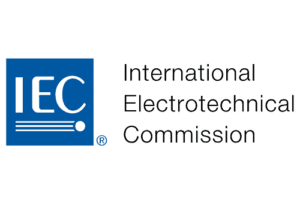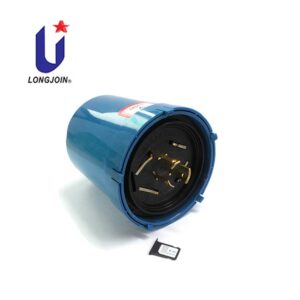屋外街灯用光電セルの一般的な品質問題と解決策
導入
Zhaga Book 18準拠のソケットは、センサー、光電セル、コントローラーとの信頼性の高いインターフェースとして、現代のインテリジェント照明システムに不可欠なコンポーネントとなっています。しかし、技術革新には複雑さが伴い、特に設置の安定性と性能に関しては複雑化が進んでいます。設置業者やメーカーの間で、Zhagaソケットのセットアップに逆止弁(ストップリングとも呼ばれます)は本当に必要なのかという疑問が高まっています。この記事では、その疑問とその他の疑問にお答えします。
What Are the Common Quality Issues in Outdoor Photocell Sensors?
As outdoor lighting systems scale across cities and infrastruct   ures, reliability issues become more obvious. Common problems like inaccurate triggering, system incompatibility, or failure in extreme weather can significantly raise maintenance costs and reduce public trust. Each issue often stems from overlooked details in design, manufacturing, or testing—and each has a solution.
1. Insufficient Environmental Adaptability
Photocells used outdoors must endure whatever nature throws at them: rainstorms, dust, heatwaves, snow, and high humidity. When components can’t handle these conditions, performance drops.
Issue: Photocell sensors exposed to extreme temperatures or high humidity levels may experience performance instability. This leads to flickering lights, delayed responses, or failure to activate.
解決:
Fixing the Problem | 詳細 |
High-temp materials | Use heat-tolerant resistors and ICs |
Improved sealing | Waterproof IP65-rated casings reduce humidity damage |
Testing | Simulate weather extremes in lab settings |
Adapting to environmental stress is no longer optional—it’s the new standard for street lighting solutions.
2. Sensor Accuracy Degradation
Cleanliness and calibration are vital to maintaining accuracy. Unfortunately, photocells often operate in polluted or dusty areas, especially in urban environments. If light sensors become blocked or degrade, the system can misfire.
Issue: Over time, dust accumulation or sensor aging can reduce sensitivity, leading to inaccurate light detection or lights staying on/off unnecessarily.
解決:
- Add a self-cleaning lens design that resists dirt and debris.
- Use dynamic calibration algorithms to reset sensor thresholds.
- Choose industrial-grade sensors designed for long-term accuracy.
A city’s energy strategy depends on precision. Routine calibration and smarter optics keep readings sharp.

3. Compatibility Issues
Street lights rely on seamless integration between sensors, drivers, and controllers. But not all systems are built to work together.
Issue: Incompatibility with certain drivers or loose mechanical connections can result in poor performance or system failure.
解決:
修理 | 説明 |
Compatibility list | Publish tested compatible driver and ballast combinations |
Locking sockets | Use twist-lock or 7-pin NEMA sockets for secure connection |
Interface options | Offer multiple model variants to cover all bases |
Plug-and-play solutions reduce confusion during installation. Adhering to standards like ANSI C136.41 can improve interoperability.
4. Lifespan and Reliability
Every replacement or repair adds cost—not just for parts, but for labor and downtime. Building long-life components ensures cities save money over the years.
Issue: Prolonged exposure to UV light, current surges, and harsh outdoor conditions can lead to component fatigue and reduced product lifespan.
解決:
- Choose high-MTBF (Mean Time Between Failures)
- Use modular design for easier repairs.
- Conduct long-cycle burn-in testing before launch.
Testing and quality assurance help ensure that what works now continues to work in five or ten years.
How Can Future Technology Trends Address These Issues?
Looking ahead, lighting systems must evolve to meet the demands of smart infrastructure. Cities want automation, adaptability, and efficiency. New technologies offer a chance to fix old problems—and elevate photocell lighting sensor performance to new heights.
1. Intelligence and IoT Integration
Connecting photocells to a smart grid allows data collection, remote monitoring, and dynamic lighting control. This is essential for modern urban management.
Direction: アダプティブディミング based on real-time data can reduce energy use and maintenance costs.
R&D Path:
2. Energy Efficiency and Carbon Neutrality
Municipalities are under pressure to meet climate goals. Lighting control systems are now expected to contribute to carbon tracking and reduced energy waste.
Direction: Strive for zero standby power and a lower carbon footprint.
R&D Path:
- Design chips that consume less than 0.1W in idle state.
- Add carbon tracking into control dashboards.
- Work with carbon verification entities to certify products.
The demand for sustainable tech is growing. Efficient 光電池制御 is part of that solution.
3. Standardization and Ecosystem Building
Every component in a lighting system should work in harmony. By aligning with open standards, manufacturers can boost compatibility and reduce customer friction.
Direction: Creating open standards promotes wider adoption and smoother integration.
R&D Path:
- Join international standard bodies like IEEEor Zhaga Consortium.
- Release API docs for third-party integration.
- Support firmware updates over the air (OTA).
4. User Experience Upgrade
Field workers need easy installations. Operators need visibility. Citizens want well-lit, responsive streets. Improving UX delivers benefits at every level.
Direction: Design for seamless setup and diagnostic visibility.
R&D Path:
- Offer visual signal indicators (e.g., LED codes).
- Build mobile apps that show real-time system status.
- 探検する UWB (Ultra-Wideband)to pinpoint faults within a lighting network.

What Are the Recommended R&D Resource Allocations?
Technology leadership takes foresight. R&D investments must be staged with clear goals across timelines:
Timeframe | Focus Areas |
Short-term (1-2 years) | Improve reliability and compatibility of existing photocell sensors. |
Medium-term (3-5 years) | Develop AI-based photocell lighting sensor systems. |
Long-term (5+ years) | Experiment with quantum dot sensing and new materials. |
What Is the Role of Testing and Verification?
Testing separates premium products from the rest. Manufacturers that cut corners on testing end up with more product recalls, bad reviews, and increased costs. A multi-layered verification strategy builds confidence.
Testing Type | 目的 |
Burn-in Testing | Catches early-life failures before shipment |
環境試験 | Simulates rain, dust, UV, and temperature extremes |
EMI/EMC Testing | Ensures electromagnetic compliance in urban environments |
Product validation is as important as innovation. Use labs, 認定, and field simulations to catch problems early.
結論
Enhancing the quality of outdoor street light photocells requires addressing current technical challenges and forecasting future needs. A blend of rugged design, compatibility, intelligent features, and long-term testing builds customer trust and industry leadership. Long-join is well-positioned to lead this charge with robust R&D, active participation in standardization, and commitment to intelligent lighting solutions.
外部リンク
●https://en.wikipedia.org/wiki/Over-the-air_update
●https://www.ieee.org/
●https://www.digi.com/solutions/by-technology/zigbee-wireless-standard
●https://www.iotforall.com/smart-street-lighting-iot-applications
●https://ja.wikipedia.org/wiki/LoRa
●https://standards.ieee.org/ieee/c136.41/5864/
●https://www.iec.ch/ip-code
●https://en.wikipedia.org/wiki/Ultra-wideband






